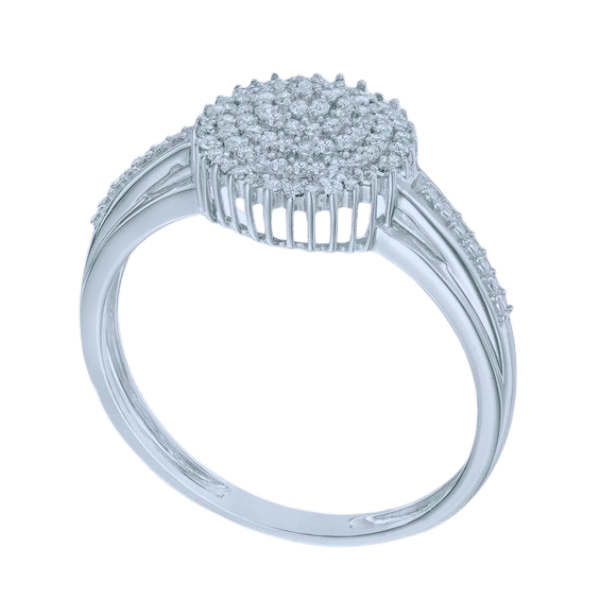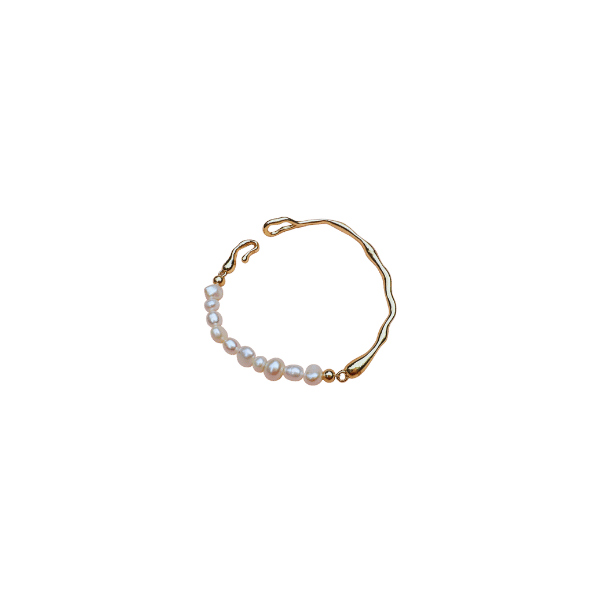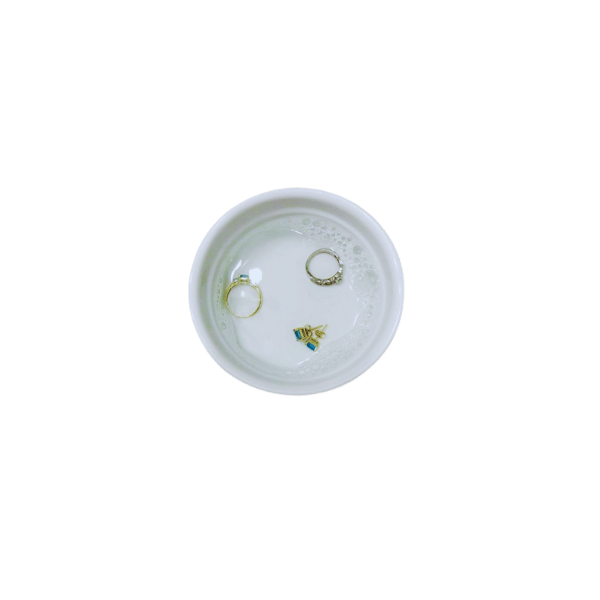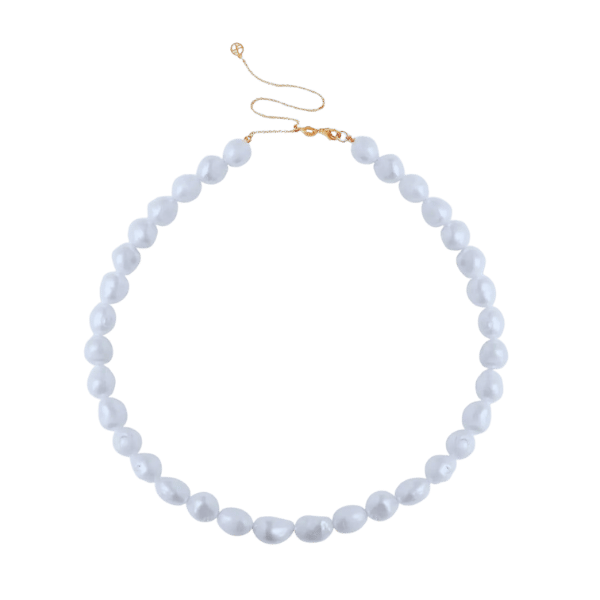These remarkable innovations of gemstones are created from 9 smaller diamonds put together ideally to exhibit the beauty of a single stone. This combination of artistry and advanced technology gives composite diamonds their astounding charm. In what ways are they gaining fame? What makes them unique? Some of the questions this blog post will delve into include the construction that United States-based corporations use to fabricate these diamonds, composite diamonds' advantages over traditional ones, and how to identify quality pieces. If you’re a jewelry buff looking to make a sophisticated and low-priced addition to your collection, join us on this journey as we discover the sparkling treasures that composite diamonds offer.
What is a Composite Diamond?

A composite diamond is an example of a jewelry design in which tiny diamonds are meticulously placed together for them to seem like a bigger diamond. This design technique has aesthetic value as well as provides an economical approach unlike the expense of a single large diamond. Composite diamonds are designed to maximize their brilliance to ensure a seamless look, making them ideal for customers looking for elegance at a reasonable price.
Understanding the concept of composite
It is possible to achieve efficiency and beauty at the same time through composite designs in jewelry. Jewelers can build multiple smaller diamonds or gemstones into a single piece of jewelry in a visually appealing way so that it looks like a single large piece of stone, which is complex to achieve and, therefore, comes at a higher cost. The precise arrangement of these stones is critical, and most undergo sophisticated techniques like pave setting or halo and cluster designs to attain uniformity and brilliance.
Further development in the techniques for making composite diamonds has been achieved in recent years, particularly in the micro-setting industry. With these technologies, artisans are able to place diamonds so accurately that the surface becomes smooth and the edges of the diamonds so clean they appear to glow. Composite diamond jewelry is known to cost, on average, 30-40% less than comparable single-stone pieces of a similar size. Also, composite designs have received increased attention from the market because the need for sustainable and conflict-free gemstones is on the rise.
Using a composite design approaches and styles of international remount expert’s diamond jewelry, manage to achieve the appealing quality and brilliance, sophisticated style at an elegant jewelry piece which is also cost-effective.
How composite diamond jewelry is crafted
Composite diamond jewelry is created by amalgamating several smaller diamonds into one singular piece, which visually appears to be a larger single diamond. In order to ensure conformity, designers strategically pick out diamonds of the same size, color, and clarity in order to achieve optimal visual effect. The diamonds are then set into stable and durable metal casings, the precise patterns of which were crafted prior. The entire piece is enhanced with brilliant laser cutting, micro setting, and other advanced techniques that provide smooth integration of the diamond into the jewelry piece. This technique allows for stunning designs that attract the eye while being inexpensive at the same time.
Comparing composite diamonds and natural diamonds
The origin, composition, and overall value of composite diamonds and natural diamonds differ in many aspects. Each diamond’s individuality and authenticity stems from natural diamonds which are formed over billions of years through immense heat and pressure underneath the Earth’s mantle. Contrarily, composite diamonds are created by fusing smaller diamond fragments or layering materials that resemble a diamond. While natural diamonds are more appealing for their durability, value, and their status as a symbol of luxury, composite diamonds serve as a cheap alternative. Buyers should consider their priorities, whether it be budget, durability, or aesthetics, before making a decision.
How Composite Diamonds Provide Unique Benefits

The appearance of a larger diamond without the cost
Composite diamonds are a combination of smaller diamond fragments assembled together to form a single piece, which gives the appearance of a bigger stone without the need for the high expenses associated with a singular diamond of similar size. This approach provides considerable savings; for example, the cost of a high-quality composite diamond ring can be up to thirty to fifty percent lower compared to a natural diamond ring of the same perceived size. The modern skill of craftsmanship guarantees that composite diamonds have perfect, minimum gap settings that help improve their aesthetic appeal. Furthermore, the settings are engineered to maximize the brilliance of the diamond, enabling the composite arrangement to reflect light more efficiently and imitating the sparkle of a bigger diamond. For these reasons, composite diamonds make the perfect choice for bold and luxurious individuals on a budget, as they do not compromise on quality, elegance, or style.
Composite diamonds offer versatility in design
Through the round, oval, and square clusters, as well as other custom configurations, composite diamonds can easily be arranged into various shapes and patterns, which offers versatility in design. Their adaptability in design allows jewelers to create pieces that can be tailored to a wider array of personal styles and preferences. Also, their adaptable settings make them suited for earrings, pendants, and even engagement rings which serve as affordable yet sophisticated alternatives to larger single-stone diamonds.
The price tag advantage of a composite diamond
Affordability is one of the most persuasive advantages of composite diamonds as compared to larger, single diamonds. Composite diamonds are typically priced at a fraction of the cost of a similarly sized solitaire diamond which makes them an interesting choice for cost-conscious consumers. For example, the cost of a solitaire diamond that weighs one carat can vary greatly based on its specific features, ranging from $4,500 to above $15,000. However, composite diamond clusters that offer a similar visual impression earn around $1,000 to $3,000. The difference in cost is such that consumers are able to appreciate the superb aesthetics of composite diamonds without breaking the bank.
Furthermore, the cost-benefit is enhanced by the fact that multiple smaller diamonds merged into a single unit enjoy reduced costs in production. Economically, these savings further elevate the growing use of composite diamonds among couples going for engagement rings. The affordability of these designs ensures that even those not part of the elite class can lavish intricate or elegant designs, enjoying sophisticated artistry with ease. This economic fact reveals why composite diamonds are increasingly popular in modern markets.
Exploring the Different Types of Composite Diamonds Available

Understanding different types of composite diamonds
Each type of composite diamond design has unique features specially tailored for different needs and aesthetics. Here is a summary of the most popular styles of composite diamonds:
Cluster Settings
- Cluster-set diamonds arrange several smaller diamonds close to each other to mimic a single, larger diamond. This design is cost-effective and highly customizable, which makes it popular for engagement rings and other jewelry pieces. The specific arrangement maximizes reflection and brilliance by increasing the amount of light that can be reflected.
Invisible Settings
- Invisible set diamonds feature exceptionally well-fitted cut stones which are assembled in a way that hides any traces of seams. This technique takes precision assembly, but it also adds a contemporary touch when done well as it gives the finished product a uniform, glimmering finish.
Halo Composite Designs
- The center diamond is set in the halod design and surrounded by smaller stones which amplify both the sparkle and the perceived size of the centerpiece. The secondary diamonds in halo settings help make the composite diamond capture as much light as possible. Halo style composites are best stand-alone as they are bold while also elegant.
Mixed-Gemstone Composites
- These simple yet modern composites are ideal for adding personal touches as they can feature different types of diamond and emerald or sapphire diamonds arranged in clusters or other patterns. This style makes for bold alternatives when making unique jewelry pieces.
Three-Stone Designs
- Three stone composite designs consist of two or more diamonds of different sizes set together in a single mounting, often representing the past, present, and future. This iconic design is ideal for people who prefer a meaningful yet classic look.
Each type of composite diamond has its appealing charm, which distinctly caters to specific tastes, occasions, or even budgetary limits. With so much creativity in modern jewelry pieces, composite diamond styles offer an unlimited answer, whether there is a focus on sparkle, meaning, or economy.
Choosing the right composite diamond ring
A number of factors can impact the choice made when selecting a composite diamond ring, this includes personal preferences, lifestyle, and budget. Some of the important factors included are ring type, diamond grade, workmanship, and setting type. Having some understanding of these factors can significantly aid in your decision making.
Diamond Quality
- As a composite diamond is created with the aid of smaller diamonds, assessing the diamonds cut, color, clarity, and carat weight, collectively known as the “4 Cs” is highly important. While the size of the individual stones may be smaller, if the diamonds are well cut they will be able to maximize brilliance and sparkle while still being inexpensive. Aim for stones that balance clarity and color sufficiently, as it will enhance the stones shine.
Craftsmanship and Setting
- Both the appearance of the ring and its durability will be heavily influenced by the setting. Platinum alongside 18K gold are popular setting choices due to their resistance to tarnishing and durability. Composite diamonds can be set with advanced micro-pave and halo settings that enhance their shine as well as create the illusion of a larger centerpiece.
Style Preferences
Rings featuring composite diamonds can be designed in many styles, some include cluster, three-stone, and floral motifs. To increase visual impact while still remaining on budget, cluster designs would be most ideal, whereas the three stone style carries more symbolic meaning and is often desired for its sentimentality. It is best to account for the recipient’s taste and lifestyle when choosing a style.
Cost Efficiency
- Composite diamond rings are cost-effective. On average, they can achieve almost the same aesthetic as larger solitaire diamonds for about 30-50% of the cost. This is ideal for buyers wanting luxury and grandiose sights while remaining within a budget.
Durability and Maintenance
- With smaller stones in a composite design, looser settings may cause them to tumble over time and compromise the design. Proper routine maintenance, such as professional cleaning and checking for loosened stones, is recommended to keep the ring in peak condition.
Certification and Guarantees
- Make sure that the diamonds that are included have certification from reputable gemological institutes like GIA. The purchase is protected by the certification along with the guarantee of the quality and authenticity of the diamonds.
Considering these factors helps you find a composite diamond ring that suits your desired appearance while providing value in the long run.
Popular styles in composite diamond jewelry
Halo Rings
- This style has a main, center diamond encircled by smaller stones which enhances the beauty and size of the ring.
Cluster Settings
- A number of diamonds are set close together in a specific fashion to give the impression of a single stone of greater size.
Three –Stone styles
- This style includes three main diamonds which represent the past, present, and future; it is elegant and meaningful at the same time.
Vintage –Inspiration Designs
- Composite stones with intricate artistic forms such as milgrain edges and engraved patterns.
All of these different styles look good visually and at the same time offer flexibility in personal choice and matters of different occasions.
The Pros and Cons of Composite Diamonds

Advantages of opting for a composite diamond option
The solution that Saves Money
- Compared to single, larger stones of the same visual size, composite diamonds are usually less expensive. Industry cost data suggests that a composite diamond ring will achieve the same aesthetic impact as a solitaire diamond, but can cost up to 50% less, so the ring can still be bought for half the amount without having to compromise on elegance. This value alone makes these diamonds more economical.
Improved Aesthetic Appeal
- Composite diamonds can enable ‘setting’ designs, which, when combined with effective styling arrangements, can create the image of having a larger stone. This alloyed diamond look can add an elegant touch to all kinds of styles and designs. As a result, these diamonds are the best option for anyone wanting to make a strong visual statement without spending much money.
Design Flexibility
- Composite diamonds can lend themselves to more ornate pieces. Their intricate shapes and diverse layouts enable them to be crafted into elaborate customized settings or other jewelry pieces for a higher degree of personalization than other tough customer-blemishing jewelry styles.
Less Impact on Nature
- Since composite diamonds are made from smaller stones, the negative environmental impact caused by mining single large diamonds is greatly reduced. This contributes to sustainable and ethical practices that appeal to buyers who are more conscious about these issues, making them environmentally friendly.
Damage Reduction Strategies
- Composite designs are not as vulnerable to total destruction as a massive single stone is. If small stones become loose or damaged, they can be repaired or replaced without having to make changes to the overall piece.
Taking these factors into account allows buyers to make appropriate choices regarding their budget, style, and ethical considerations without sacrificing practicality or personal preference.
Potential drawbacks of composite diamonds may
Concerns About Durability
- Smaller composite diamonds are made from smaller stones and it is possible that their integrity is weaker than single larger diamonds. This results in greater risk of chipping, scratching, maintenance, and repair of the bonds of the components within composite pieces that are fragile.
Don’t Forget About Lack of Craftsmanship
- Poor craftsmanship results in fragments bonding or joined through gaps being visible to the eye or even under a microscope for some skilled pieces. The jewelry can lose its aesthetic appeal beauty and value which is overall negative for the brand in case these defected pieces are noticed.
Incomparable To Simple Natural Diamonds
- Because composite diamonds are made from several different stones, their value is lower than natural single diamonds of the same size. Composite designs are less appealing to buyers that want to consider long term investment opportunities because market demands are inclined to shape perception and value towards larger singular stones.
Difficult And Tedious Maintenance Procedures
- Composite diamonds require careful hand cleaning because they consist of complicated seams and pieces. With time if properly cared for, the gaps that dust and debris accumulate can cause a variety of problems to the brilliance and color of the jewelry making them appear less appealing.
Changes In Wear Over Time
- Because composite designs consist of several small stones, each may have their own wear patterns. This could result in a stone wearing out in an asymmetrical manner which would need professional intervention to regain symmetry and shine.
These restrictions demonstrate the need for deft judgment while selecting a composite diamond. This makes sure that the pros and cons are taken into consideration so that a selection that meets their preferences is made.
How do composite diamonds hold up over time?
If maintained properly, composite diamonds are structurally strong and can stand the test of time. Their cleaning and inspections are essential for maintaining their beauty and construction. Moreover, the diamonds may be more prone to damage due to having many smaller stones set together. Over time, the setting may shift, causing gaps to form which can affect the design's symmetry and strength. These issues can be solved with professional care which ensures the composite diamond’s longevity.
Frequently Asked Questions About Composite Diamond

Are composite diamonds real diamonds?
Notably, composite diamonds possess real diamond characteristics, much like single natural diamonds; however, they vary in structure and composition. A composite diamond is fabricated from putting together several tiny diamond pieces or diamond imitators to form a larger cohesive unit. These smaller pieces are natural diamonds and possess the same physical and chemical traits as large diamonds. Arrangements and Assembly of small diamonds can determine the appearance or value of the diamonds.
However, genuine diamonds are composite setting, but the value, and durability may not measure up to single diamond of comparable size. Composite diamonds may need extra care because of the intricacy of their construction, as the settings that secure the small pieces can become loose with time. Nevertheless, composite diamonds are very popular among buyers looking for economical substitutes with more impressive aesthetics without paying the hefty price for large solitaire stones.
Do composite diamonds look like traditional diamonds?
Indeed, composite diamonds can resemble traditional diamonds when viewed from afar. Their design is tailored to enhance the brilliance and sparkle by placing smaller diamonds close enough that they resemble a single larger diamond. Upon closer examination, however, the individual stones and their settings which are perceived from afar as one complete diamond, becomes distinguishable as separated.
Can composite diamond engagement rings be customized?
Indeed, composite diamond engagement rings can be personalized to meet individual specifications. Jewelers provide multiple features for customers to personalize these rings to their tastes and requirements. Here are the ways in which composite diamond engagement rings can be tailored:
Metal Type
- Depending on the wearer’s preference, rings can be made in different metals like platinum, yellow, white and rose gold, or even sterling silver which differ in durability, color, and aesthetics.
Ring Setting Design
- Customers are free to choose different types of settings like halo, cluster, pavé, or split shank. These designs determine the elegance and beauty of the ring.
Diamond Arrangement
- The composite diamonds can be designed to the desired appearance, such as full coverage, asymmetrical patterns, or certain geometric shapes.
Accent Stones
- The ring can be set with additional unique gemstones such as sapphire, emerald, or ruby to enhance its color and contrast.
Band Width and Profile
- To achieve a balance between proportion and aesthetics, the band’s width, thickness, and profile (flat, domed, or knife-edge) can be adjusted alongside the arrangement of the diamonds.
Engravings
- For sentimental purposes, an inside or outside band inscription adding personal names, phrases, or dates can be added to the ring.
Diamond Quality Specifications
- The hinged dividing lines of the small diamonds in the composite arrangement may be individually selected according to one’s preference or financial capabilities for color, clarity, or cut grades.
Ring Size Adjustment
- For ideal comfort and practicality, composite diamond rings can be made in any size to ensure the wearer’s comfort.
These adjustments alongside the engagement rings makes them affordable while still being composite diamond engagement rings multi-purposeful, uniquely tailored, and personally expressive.
Frequently Asked Questions (FAQs)
Q: What are composite diamonds, and how are they made?
A: Composite diamonds are a combination of several small diamonds, notched diamonds, or lab diamonds that are set together to form a bigger looking diamond at a cheaper cost. This process is common in engagement and wedding rings which aim to imitate the beauty of a diamond ring without spending much.
Q: Are composite diamonds a good choice for engagement and wedding rings?
A: Yes. Engagement and wedding ring sets with composite diamonds are becoming very popular because they give the appearance of a set with big diamond rings but cost less, which is a plus for someone looking to spend less money.
Q: What are the pros of composite diamonds?
A: The advantages of composite diamonds consist of their cost effectiveness, ability to imitate bigger diamonds, and their design flexibility. They offer a lovely shine while having exceedingly good value, especially when placed side by side with a solitaire diamond ring of equal visual impact.
Q: In what ways does a composite diamond halo make a ring look beautiful?
A: The way the frame style ring is designed with a composite diamond halo is to set a diamond or a group of diamonds in the center, which is encircled by diamonds, improving the overall charm of the piece. This beautifully sparkling frame enhances the overall appearance and is especially favored in engagement rings as it increases the brilliance of the center stone.
Q: What tips do you have for someone looking to buy a composite diamond?
A: When purchasing a composite diamond, focus on the magnificence of the individual component diamonds, the beauty of the setting, and whether the diamond set is natural or lab-grown. Another factor to consider is how the value of a composite diamond stands in comparison to a traditional one, particularly for a first-time buyer.
Q: Will composite diamonds still be able to retain their glittering appearance and durability in the long run?
A: In fact, composite diamonds are capable of maintaining their sparkle, as well as their durability, if proper care is given. It is important to note the condition of the setting over time, because while a setting is well constructed, individual components can leave much to be desired when it comes to proper maintenance.
Q&A: What distinguishes a composite diamond from a diamond cluster?
A: In a composite diamond, small, individual diamonds or notched diamonds are arranged in such a way that they resemble a single larger diamond. A diamond cluster, on the other hand, is a design arrangement composed of grouped diamonds that are placed in close proximity to each other without the intention of simulating a larger stone. Both techniques have distinct aesthetic values.
Q: What exactly is a composite material, and is it used in composite diamond rings?
A: No. 'Composite' in the term composite diamond rings does not denote the inclusion of a synthetic composite material but instead refers to the arrangement of smaller diamonds that are placed together to form the illusion of a singularly large diamond.
Q: What would compare composite diamonds to a solitaire diamond with the same visual size as that of the composite diamond?
A: Composite diamonds are typically cheaper than a solitaire diamond of the same visual size which makes them appealing to a larger population because they can be used without compromising elegance.
Q: Are composite diamonds considered valuable?
A: In comparison to a large solitaire diamond, a composite diamond is less valuable. Nevertheless, they are cost-effective because their appealing aesthetic makes them a favorable choice for customers with limited funds.






